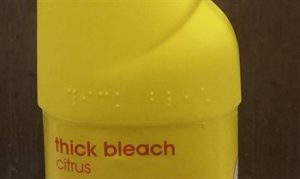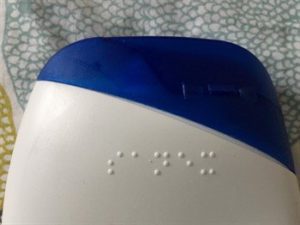Join our mailing list
Get the latest on our campaigns, news and events from Thomas Pocklington Trust by joining our mailing list
Date posted: 14th February 2020
Braille continues to be the tactile reading and writing system of choice for blind and partially sighted people all over the world.
It remains fresh, relevant and revolutionary today, nearly two hundred years after Louis Braille first demonstrated its practical potential.
You don’t have to look far to find braille in use in the UK. Here are just a few examples.
An EU directive legally requires pharmaceutical companies to produce braille labels on all medicine packaging. As a braille reader myself, I cannot overstate the importance of this decision and subsequent implementation. Bottles and tablet packages can feel very alike at the best of times. Braille labels on medicine packaging enable those capable of understanding the basic Grade 1 braille alphabet, now called Uncontracted braille, to independently and efficiently attend to any medical needs as they arise.

Some manufacturers provide braille labels on packaging for household products. Bleach is one common example. It’s also possible to find toiletries such as shampoo, conditioner and shower gel bottles labelled in braille. The Co-op also provides braille labels on many Co-op branded items.


There was a time when buttons for operating train carriage doors and signalling intent to alight from the next bus stop were more difficult to find. Embossed tactile arrows and braille button labels enable blind and partially sighted passengers to more easily interact with the environments present on board trains and buses. Many transport pass holders also feature braille labels, and some train toilets are equipped with braille identifiers and instructions.


Many buttons found in lifts and on cash machines have braille labels. You may also be able to find braille signage present in such places as office buildings and museum exhibits.